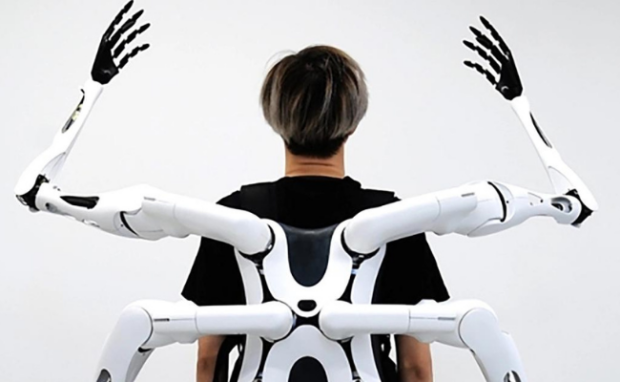Jizai Arms: Robot Arm Study Holds Our Cyborg Future
The University of Tokyo took the phrase “lend me a hand” to a new level. Its researchers share robot limbs from their Jizai Arms, a backpack-like system that supports six robotic arms. They spend two days wearing their new arms and swapping with others. Then, they document their thoughts and feelings about the activity.
The researchers said they designed the arms “to enable social interaction between multiple wearers, such as an exchange of arms.” Moreover, it explores “possible interactions between digital cyborgs in a cyborg society.” This study is more important nowadays as Tesla and other companies turn robots into household items.
It will help us understand what a future with more robots could be like. This article will discuss how the Jizai Arms work and how the researchers experimented with them. Also, I will include testimonials from the experts to show more details.
How do the Jizai Arms work?
You control the robotic arms with a smaller limb-like controller you wear on your arms. Consequently, it mimics your limb movements, hence the namesake “Jizai,” meaning “freely” or “moving freely.”
They attach to a backpack-like gizmo that supports and powers six robotic arms. You can only control two at a time so the Jizai Arms won’t give you extra abilities.
However, your buddies could control the other ones. The University of Tokyo researchers created them to simulate how people respond to having additional cyborg arms.
After developing the cyborg limbs, the researchers spent hours wearing up to four of them in a room with a mirrored wall. The activity allowed them to see how they looked wearing them.
In other words, it enabled the researchers to adjust to their Jizai Arms. The next day, they used the arms without mirrors and focused on the sensations they felt while wearing them.
The researchers moved their arms and those worn by others. They experimented with attaching and detaching the robot limbs and played out scenarios.
You may also like: Tokyo Olympics Game Lights Seen From Space Station
These included completing tasks using mechanical limbs and letting others borrow them. Their published paper stated: “We found that our bodies could precisely sense the attachment/detachment of arms.”
“We especially felt a strong impact when detaching or reducing the number of robotic arms worn,” it added. Also, the scientists suggested other ways to study the Jizai Arms.
“We also suggested adding customizability to the robotic arms to generate a sense of social ownership as a future research topic,” they said. As a result, they could study how people develop a sense of ownership for their artificial body parts.
What did the researchers feel about their robot arms?

Photo Credit: freethink.com
The Jizai Arms respondents included their testimonials in the research paper. These researchers used the pseudonyms “R-1,” “R-2,” “D-1,” and “D-2.”
R-1 said, “I didn’t feel much of anything after it was attached, just a little heavier. But I felt more of a sense of loss after it was detached.” Meanwhile, R-2 had the most descriptive comments.
He said, “When the arm is detached, the sound and vibration of the detachment, the sudden feeling of lightness in my body, and the actual appearance of the detached arm in front of my eyes.”
“When I held it up, I was surprised at its weight. I felt that the weight of the detached robotic arm was heavier than when it was working in unison with my body. This experience is similar to when I was playing the guitar, and suddenly the strap came off, and I quickly had to grab the guitar’s neck.”
You may also like: Olympics Athletes Inspire Robotic Zen Garden
D-1 stated, “There was a sense of being ‘pulled out’ since my body felt resistance when it was removed. I felt little resistance and felt it was like ‘when a tooth is removed.’”
D-2 expressed, “I subjectively felt I was large when wearing it, but I was surprisingly puny in the video! Especially when I was wearing two on top, I felt stronger because my shoulders were enhanced, but it was not so.”
Overall, it seems the researchers felt their Jizai Arms were a part of their bodies. They felt strange whenever attaching and removing them, showing an interesting reaction to having cyborg limbs.
Conclusion
The Jizai Arms is a backpack-like system that supports six mechanical limbs. The University of Tokyo researchers did not intend them for public use or add other capabilities.
The study emphasizes an important aspect of human augmentation research. Specifically, it provides insights into how people respond to having and sharing robotic parts.
Do you want to see more interesting scientific breakthroughs? Follow Inquirer Tech for the latest artificial intelligence, robots, gadgets, apps, and more.